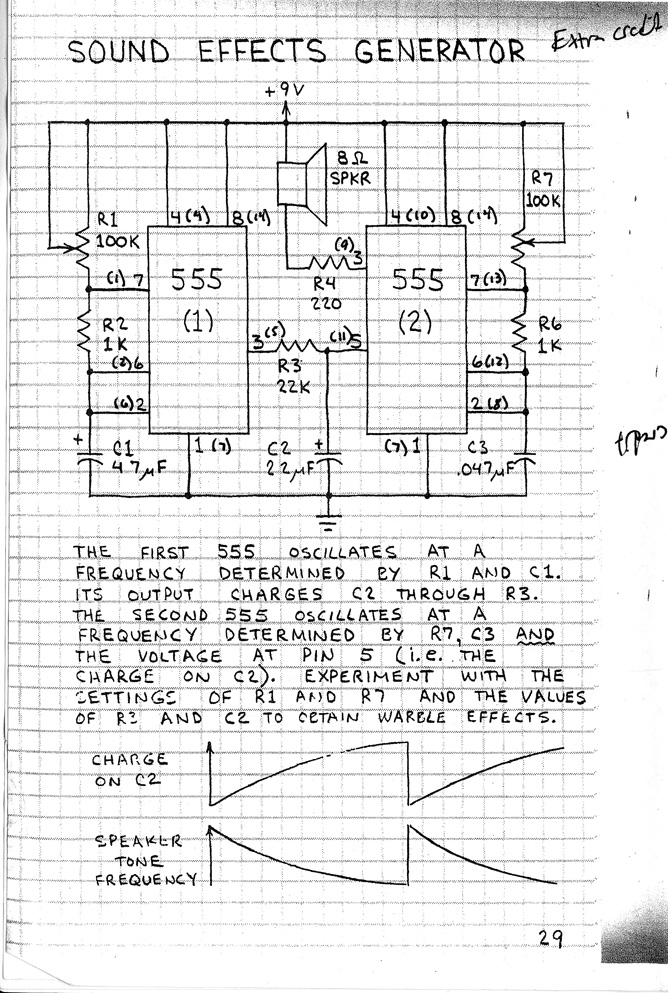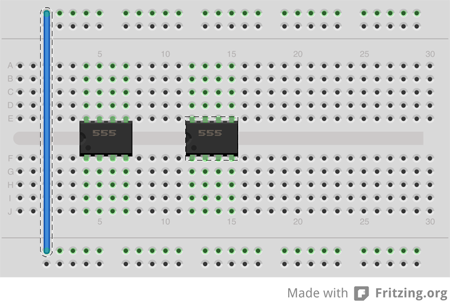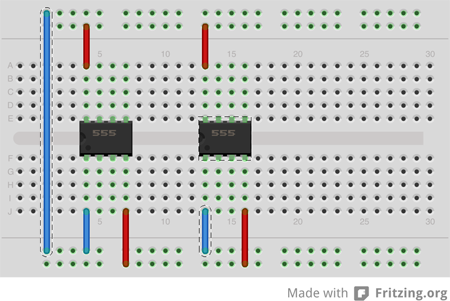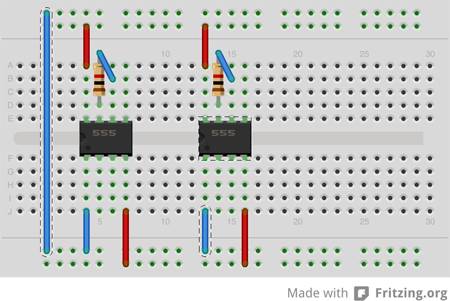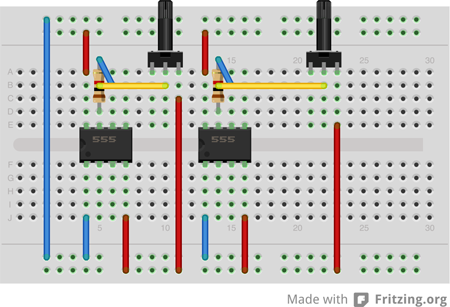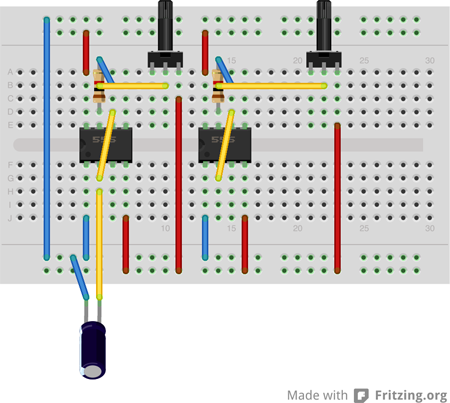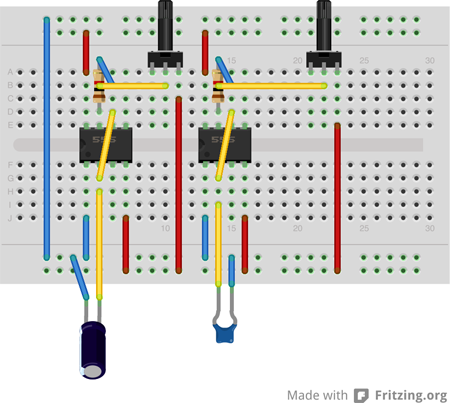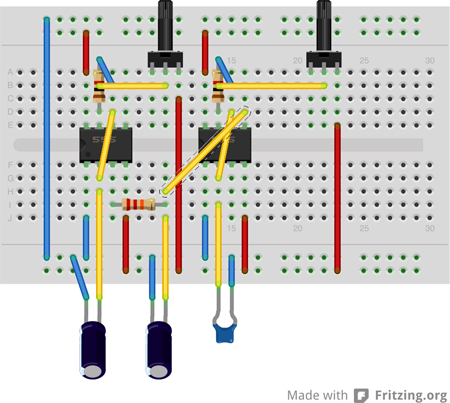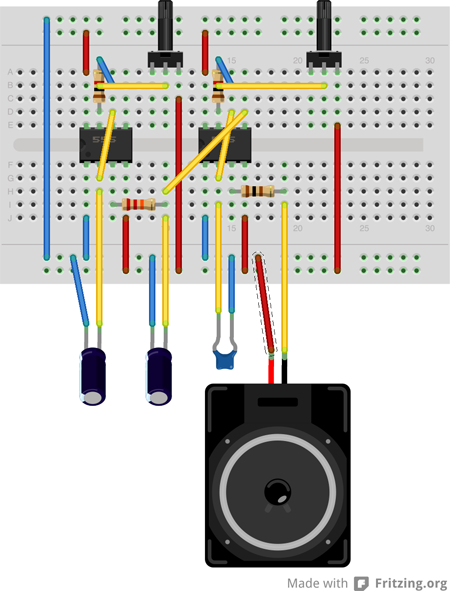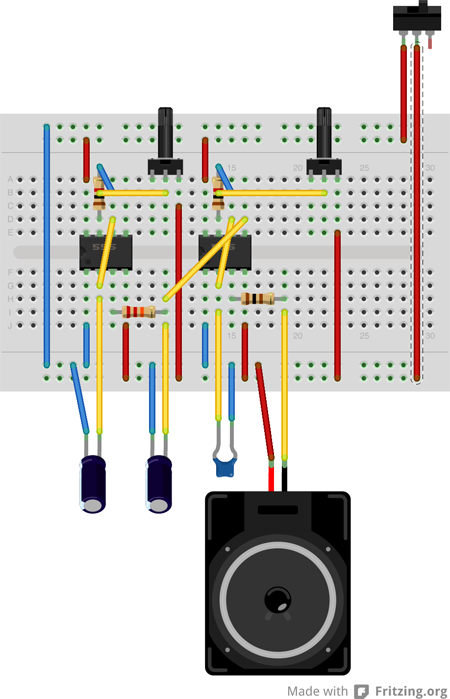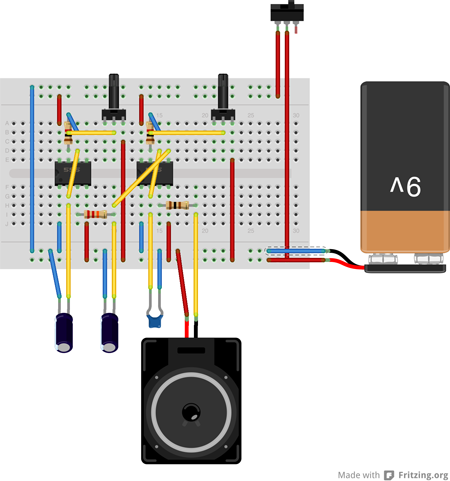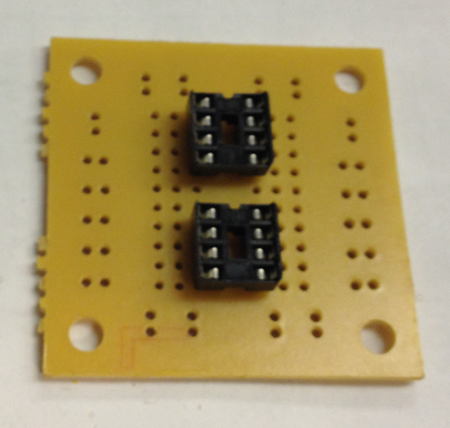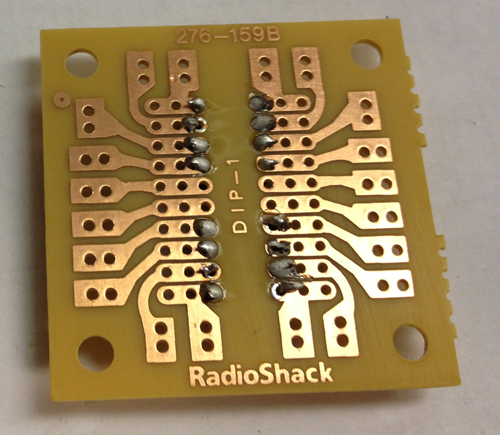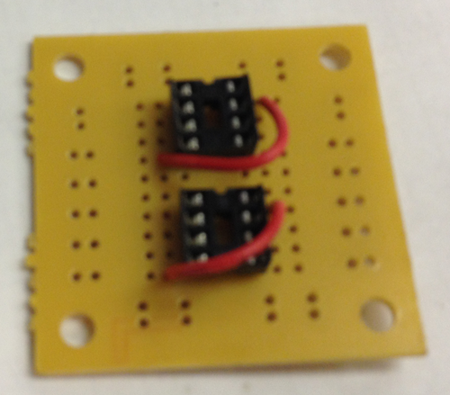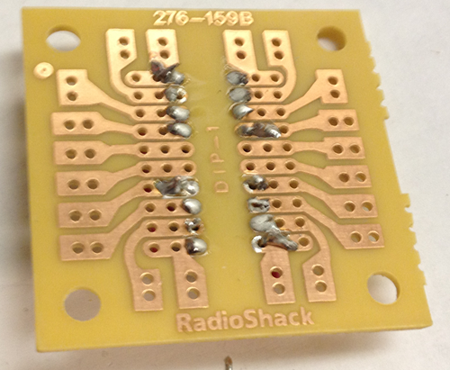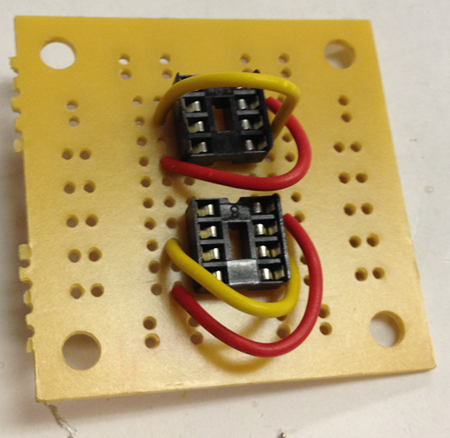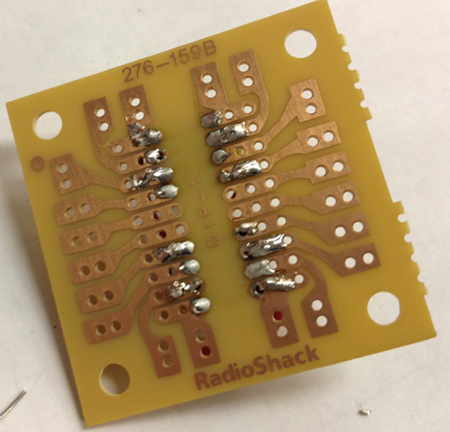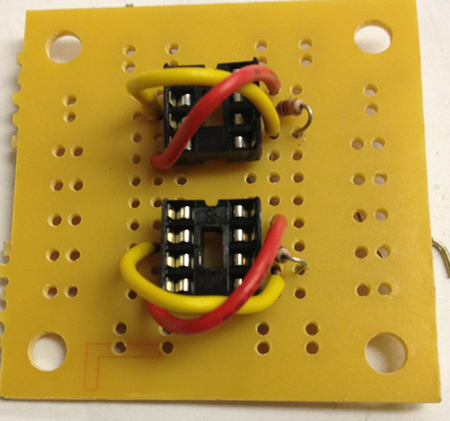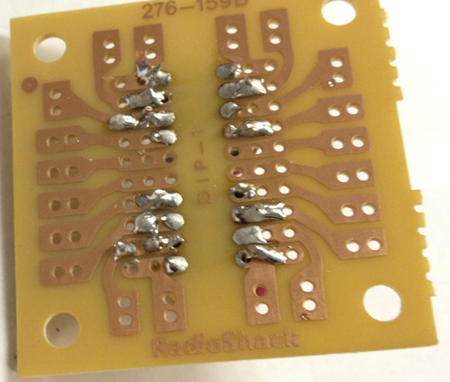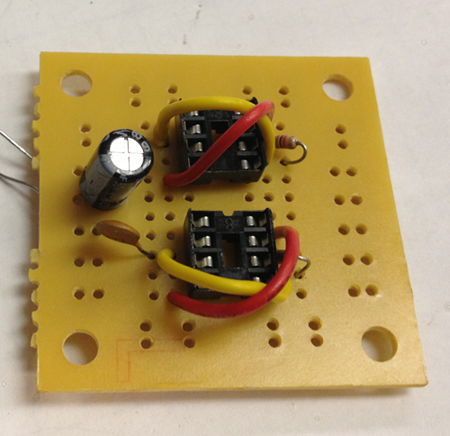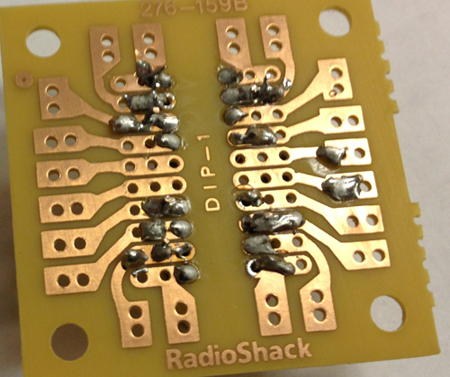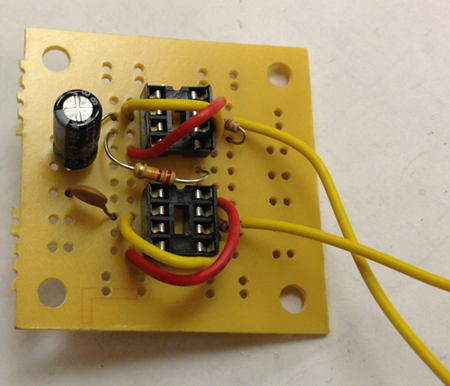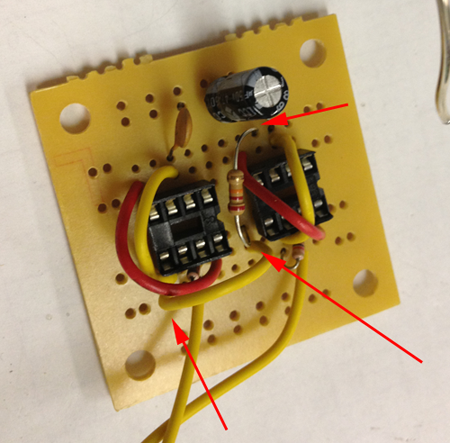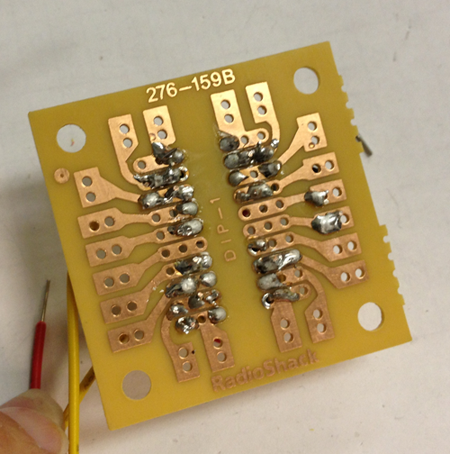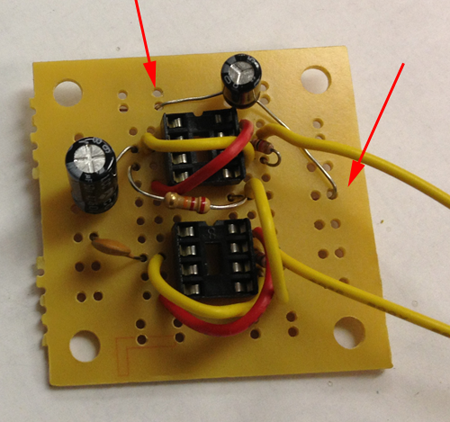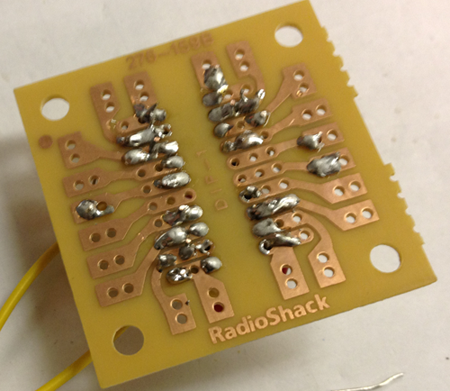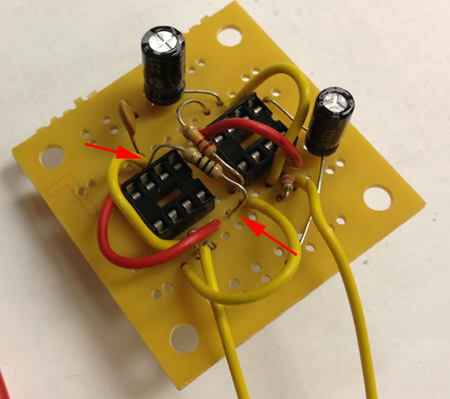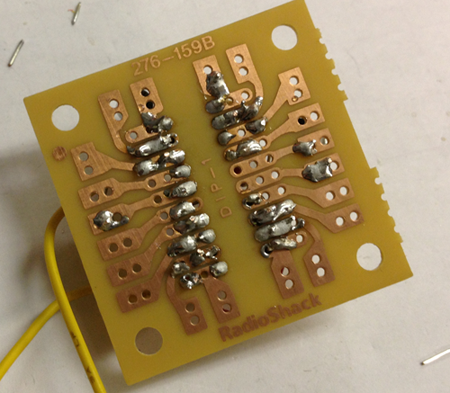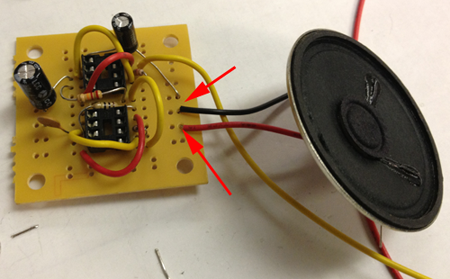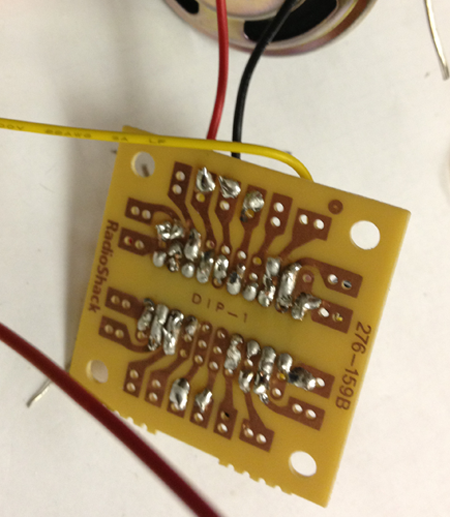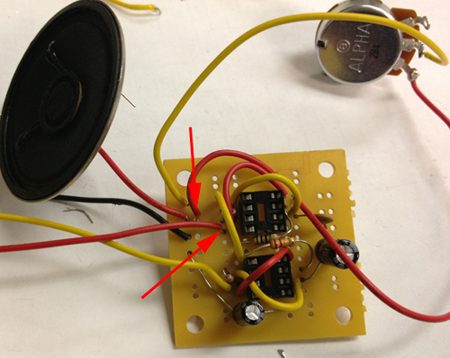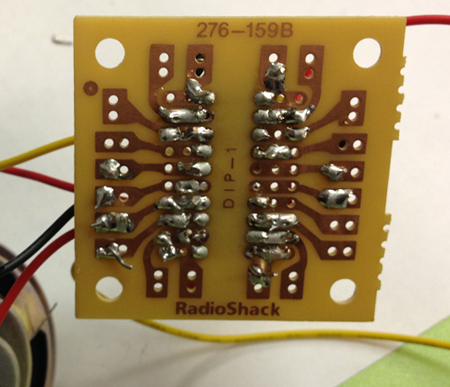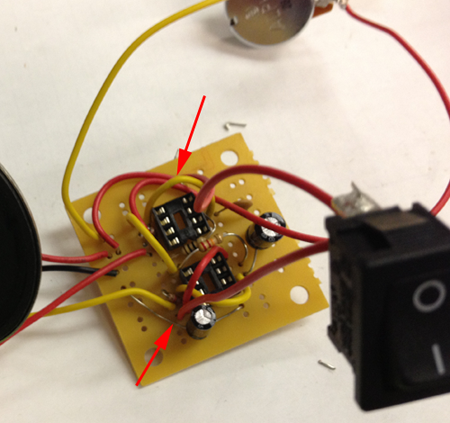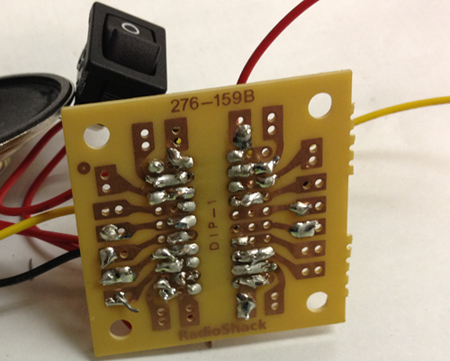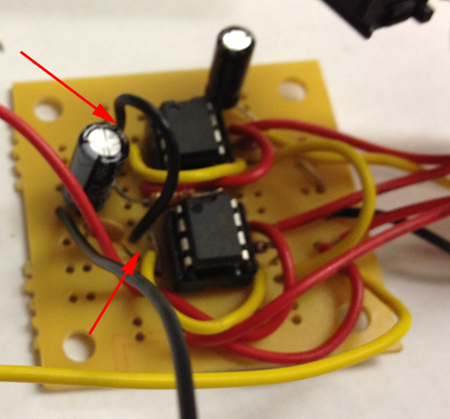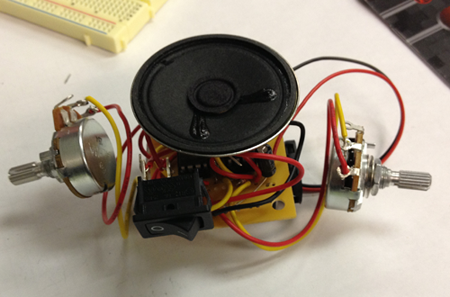Atari Punk Console
The Challenge
Design the housing for an Atari Punk Console (APC) circuit.
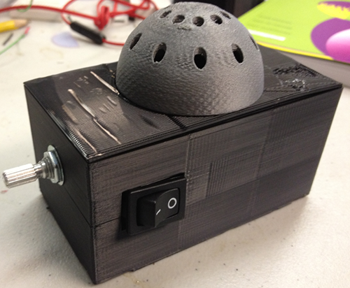
The
Atari Punk Console (APC) utilizes two 555 timer ICs or a single 556 dual timer IC. The original circuit, was called a
Stepped Tone Generator, and was published in a Forrest M. Mims III's Radio Shack booklet:
Engineer's Notebook: Integrated Circuit Applications in 1980 and then in Mim's
Engineer's Mini-Notebook - 555 Circuits. The
Stepped Tone Generator became known as the
Atari Punk Console because the square wave output of the version made by Kaustic Machines sounded like the classic Atari console games from the 1980s. Kaustic Machines added a -4db line level output to the circuit which was originally designed to drive a small 8 ohm speaker.
The APC is an astable square wave oscillator driving a monostable oscillator which creates a single (square) pulse. There are two controls, one for the frequency of the oscillator and another to control the width of that pulse. The controls are usually potentiometers but any variable resistor would work.
A quick Internet search will reveal a variety of APCs.
Here is Forest Mims III's schematic
 Image from http://chipmusic.org/forums/topic/574/fun-things-to-do-with-a-555-timer-ic/
Image from http://chipmusic.org/forums/topic/574/fun-things-to-do-with-a-555-timer-ic/
Basic steps of the Design Process
- Use a digital caliper to measure your components. Write down the dimensions.
- Research how people play with knobs and synthesizers. Follow the steps of the design process, then design the housing that reflects your research.
The Design Process requires
- Describe the general situation or problem you are trying to solve. Instead of asking what do you want to design? ask why do you want to design that? and what problem and or need will your design ultimately be solving?
- Identify your target audience, the group that will benefit from your project. Is the target population an individual, a group, a specific community, or a larger, identifiable population? Is the target population from a specific location (country, region, town), demographic (age or gender), or other identifying characteristics (health condition or employment)? Think about how is your target population connected?
-
Identify the requirements and constraints. A requirement is a need or a necessity; it's what a particular product or service should do. A constraint is a restriction on the degree of freedom you have in providing a solution to a need or problem.
- Ask what are the disadvantages of the present solution to the problem?
- Ask what compromises have been made in the present solution?
- Determine if the compromises are necessary?
- Determine if the solution can be improved?
- By taking a new approach.
- By making the design more accurate.
- By making the design more safe.
- By making the design more convenient.
- By making the design easier to maintain.
- By making the design cheaper to produce.
- By making the design more attractive.
- Determine if you can reduce the costs by eliminating parts, using different materials, changing the way the product is manufactured?
In a nutshell
- Design Step 1: Identify the Need
- Design Step 2: Research the Problem
- Design Step 3: Brainstorm Possible Solutions
- Design Step 4: Engineering Analysis-select the most promising solution
- Design Step 5: Construct a Prototype
- Design Step 6: Evaluate/Manufacture a Final Product-Reiterate
Getting Started
Keep a notebook to keep track of your questions and answers. The design process will help inform your choices and should be an integral part of your creative process.
-
Research existing solutions. What aspects of the design appeal to you, why?
- Research how people play instruments. Make sure you know more about this problem than what is provided here on this web page.
- What are your constraints? Make a list.
- Observe how people approach devices with knobs and how they hold objects. Will your synthesizer rest on a table, be held in a hand or fixed to a surface?
- Make sketches. See Examples
Some other Designs


 Images from www.beavisaudio.com
Images from www.beavisaudio.com
 Image from www.getlofi.com
Image from www.getlofi.com
 Image from billtmiller.com
Image from billtmiller.com
 Image from ssheltonimages.com
Image from ssheltonimages.com
 Image from www.photoree.com
Image from www.photoree.com


